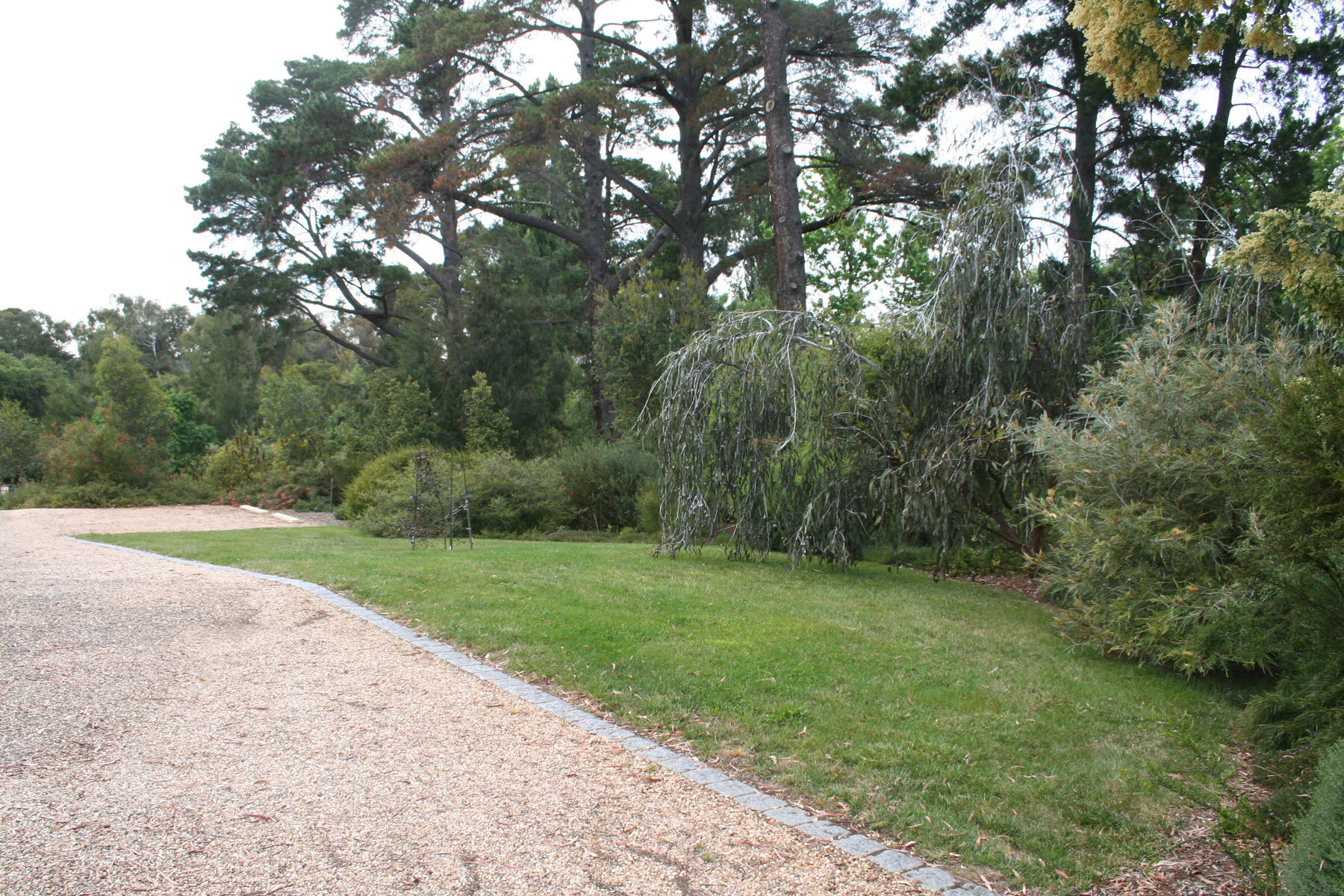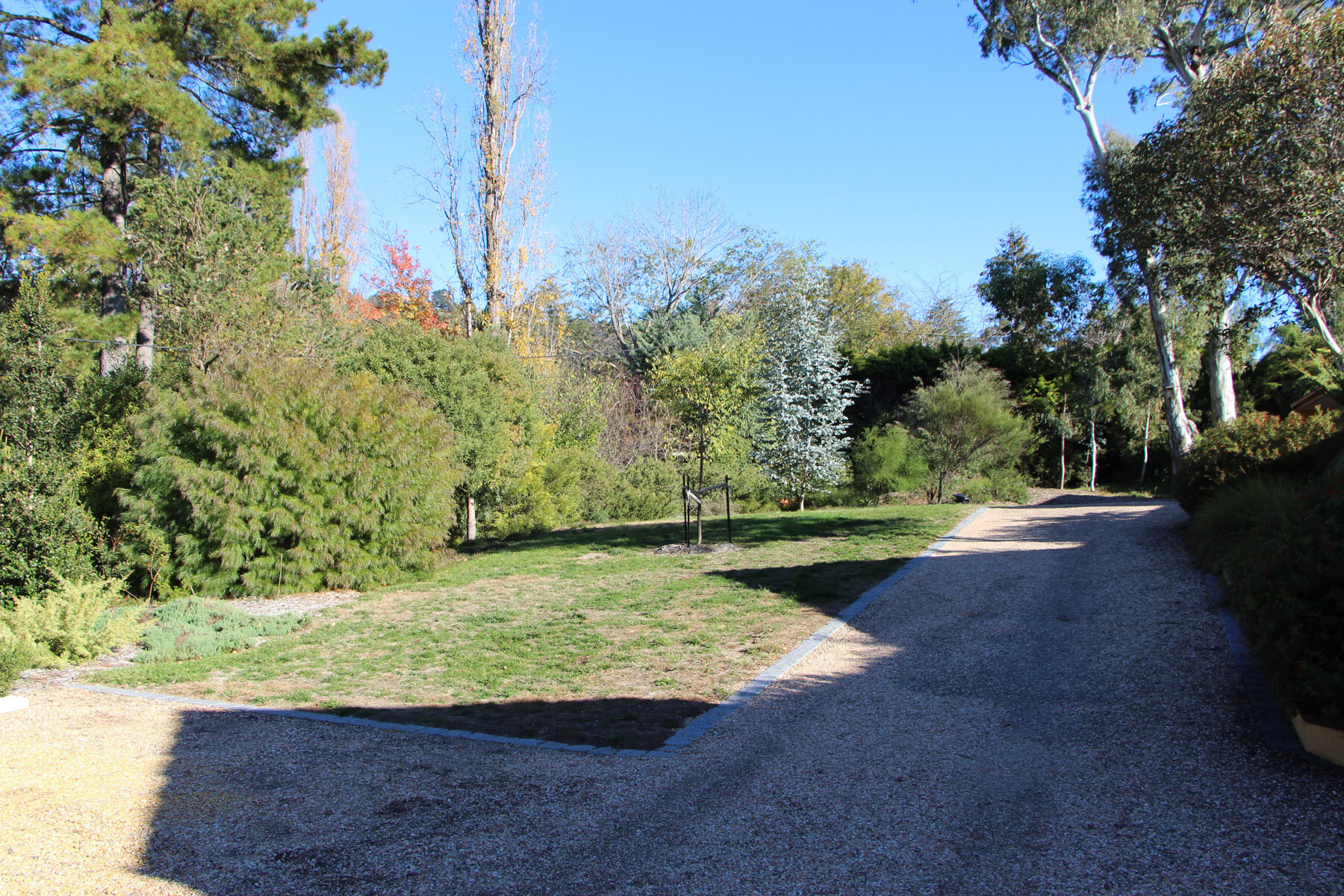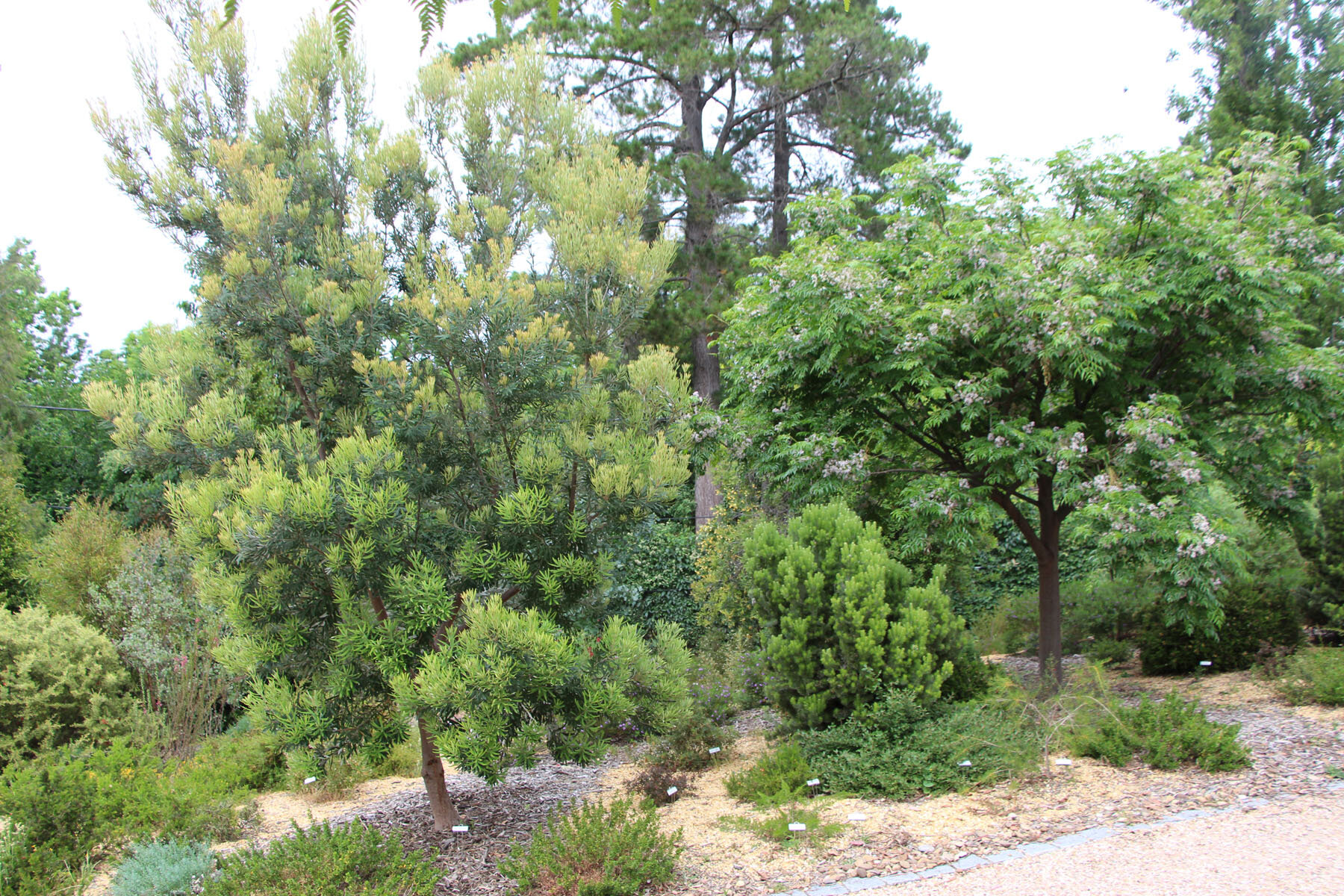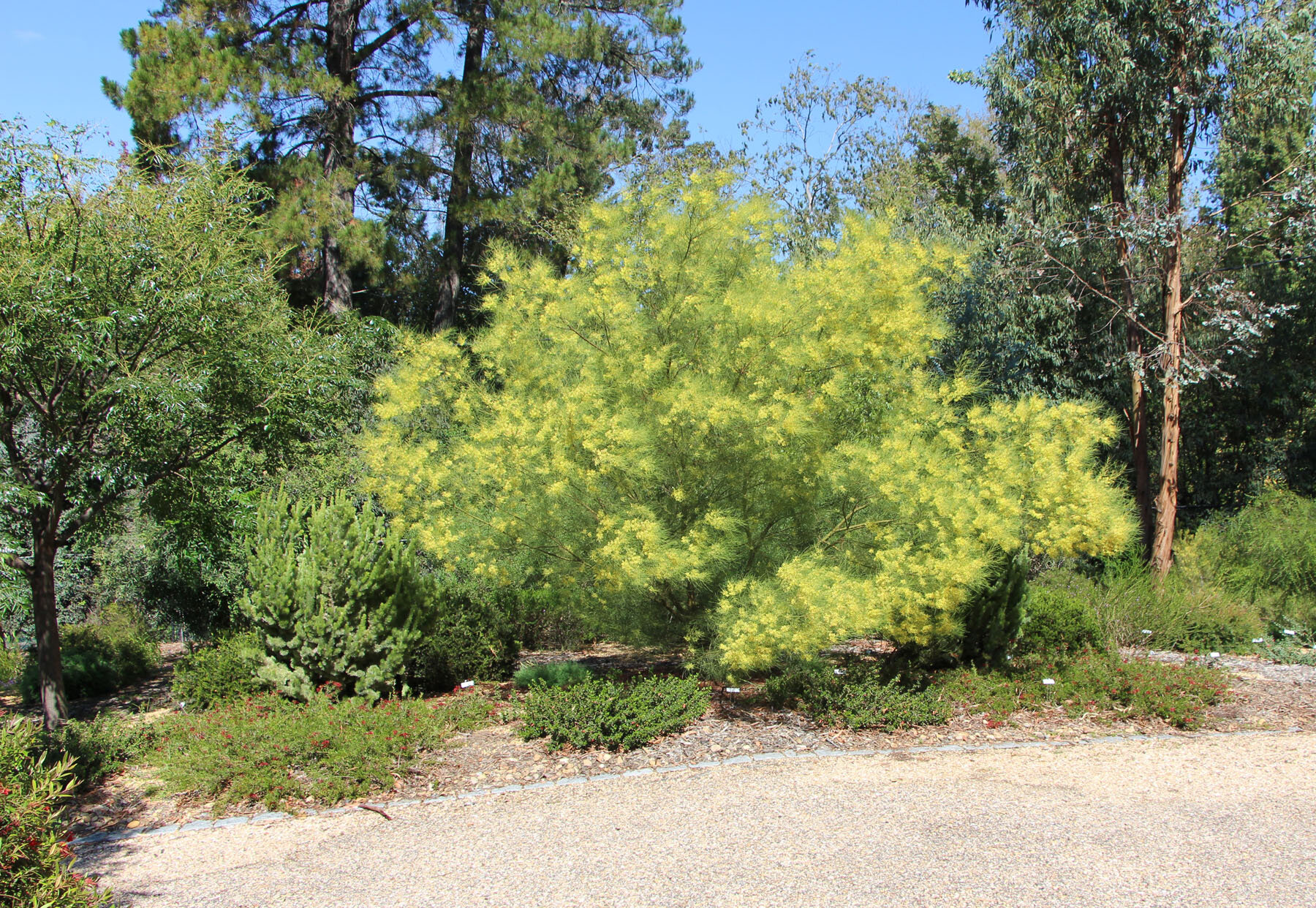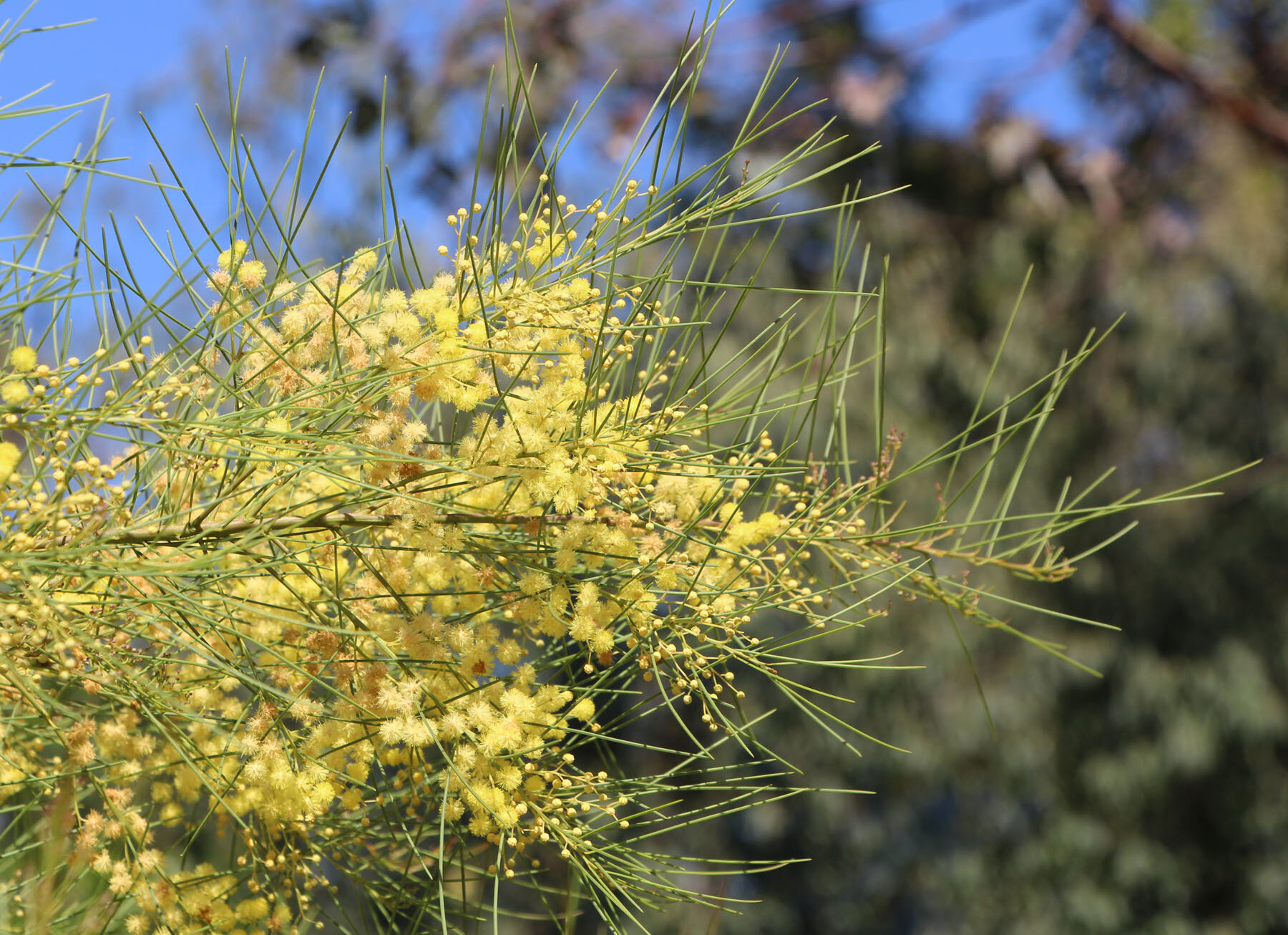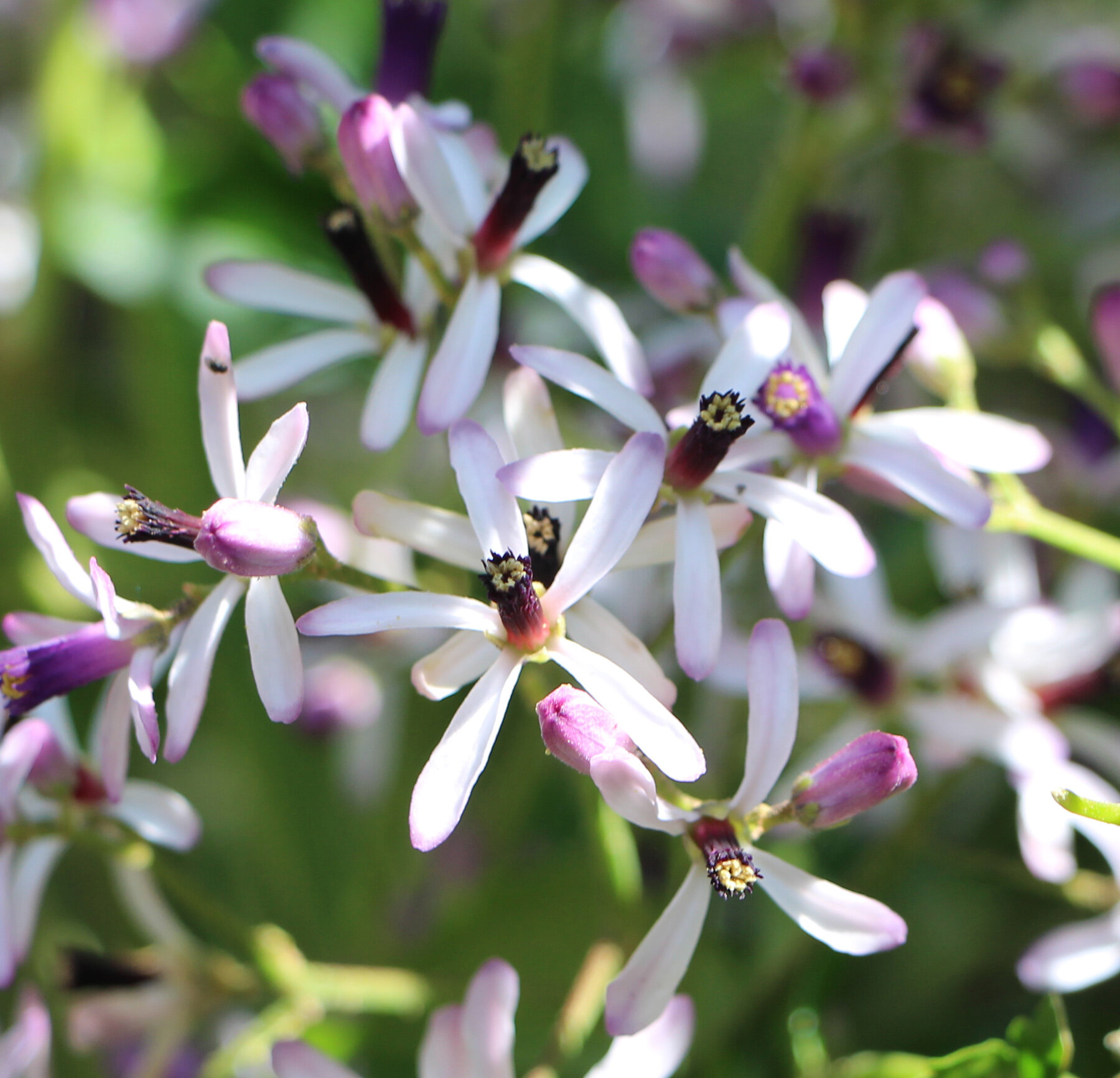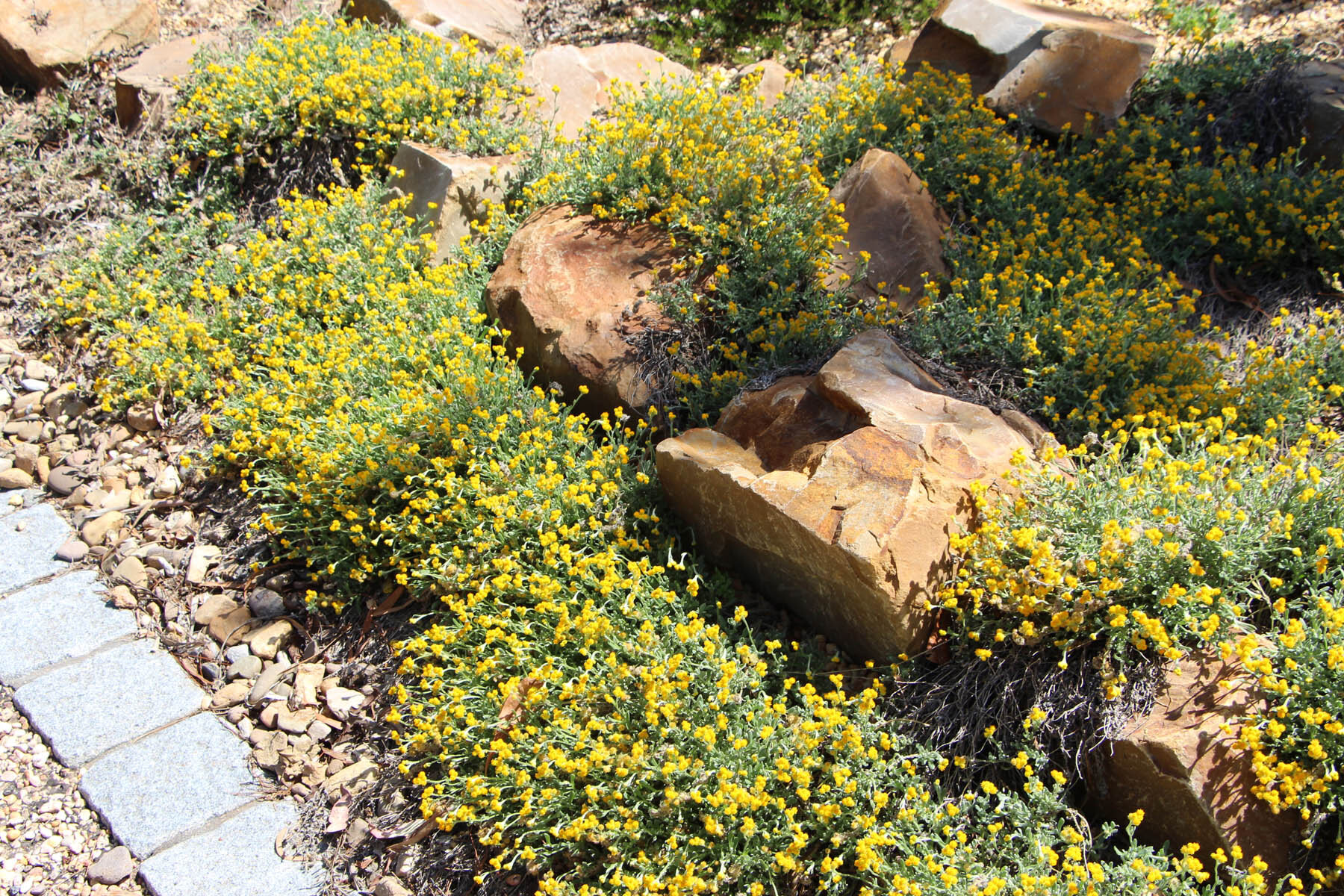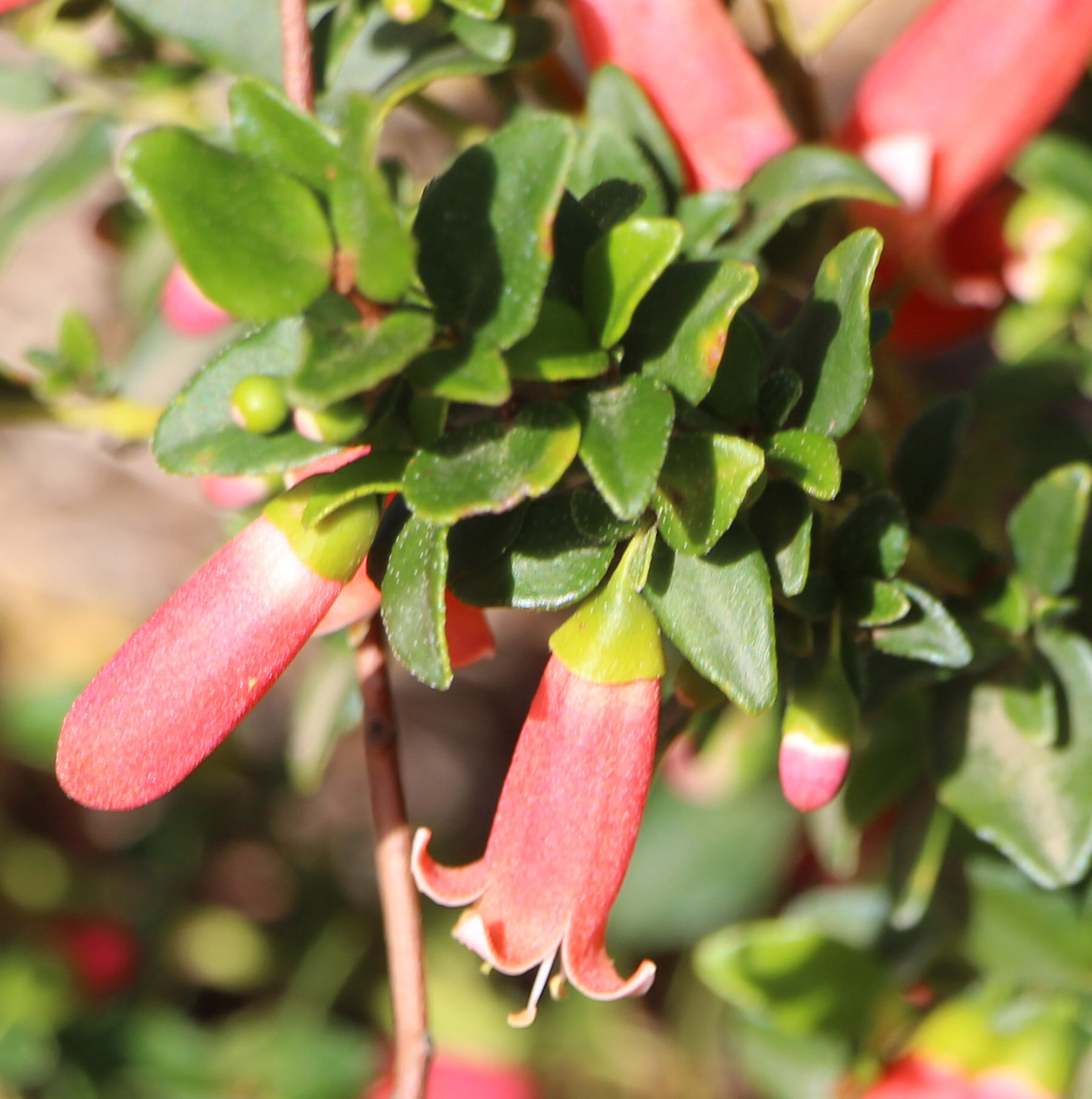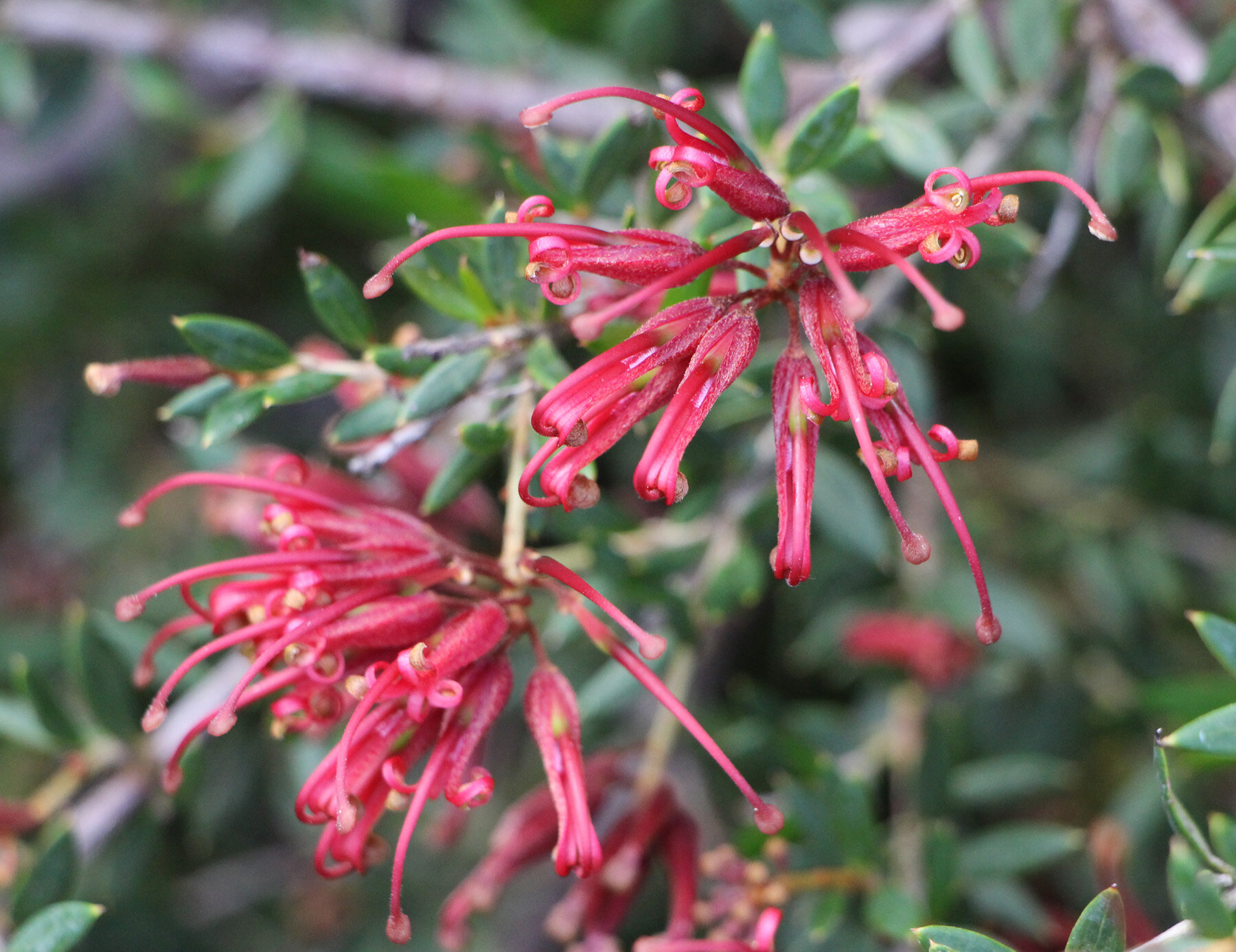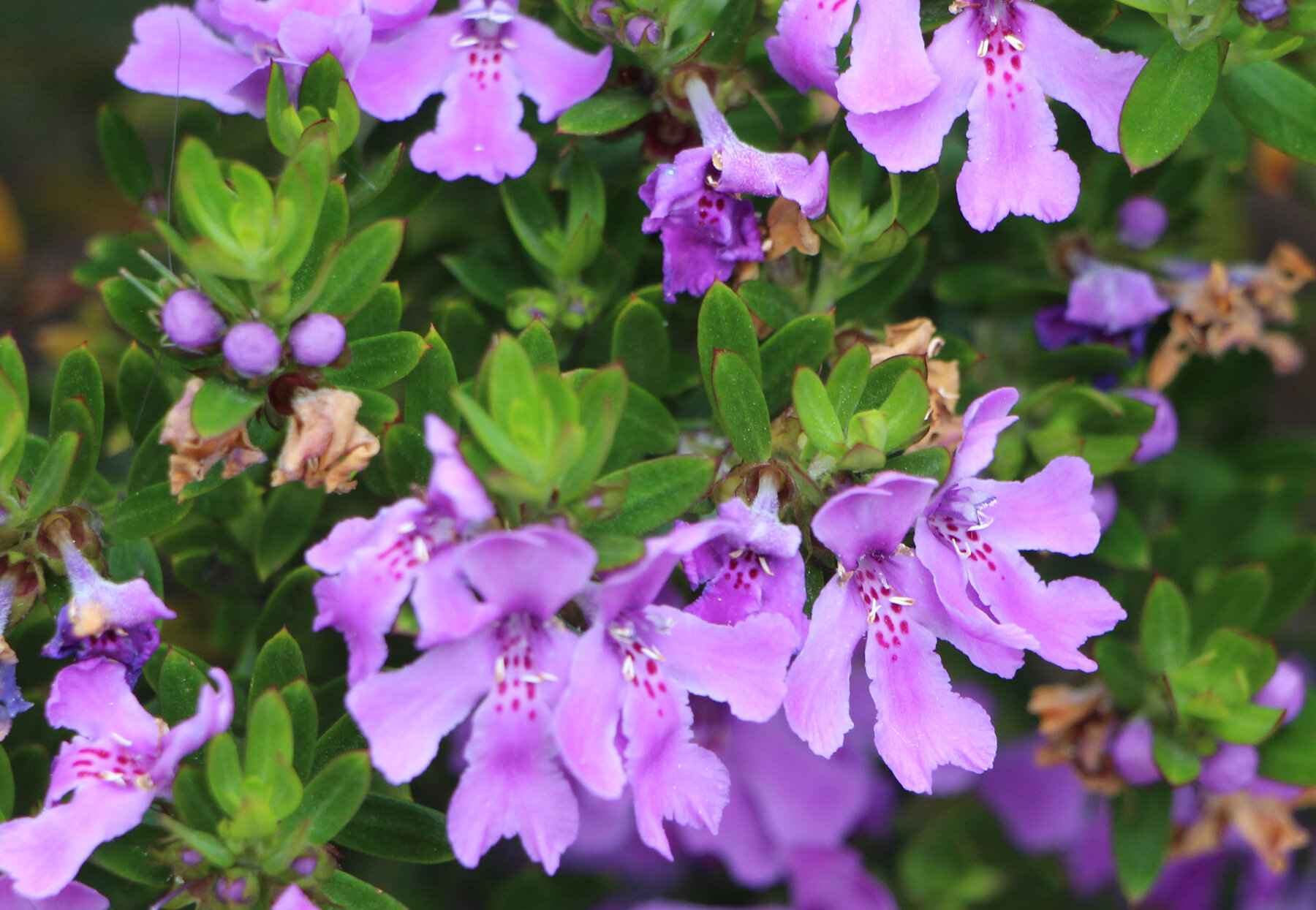Three Trees Anchor a Simple Design
In the beginning this parking lot across from the house looked green and cool. The base consisted of lawn laid over plastic mesh so that parked cars would not sink into the soil. The underlying soil consisted of compacted fill.
On the left, looking down the driveway in November 2011, the parking lawn is still attractive. On the right in May 2016 looking up the driveway, the lawn looks patchy and we found we did not use the parking area.
After removal of the lawn and support system, light sandy soil is added to the undersoil and rocks are installed at the bottom of the bed in 2016
The photo above shows the new garden bed looking up the driveway in August 2016. In the middle we planted Melia azedarach ‘Caroline’ earlier in 2015. The gold gravel mulch contrasts with the looped paths of organic mulch.
We hired a landscaper, operating a Dingo Digger, to churn up the plastic mesh and break up the hardened clay. We added light topsoil of the sort used for establishing a lawn and mixed it with the broken up clay. We added new irrigation which we have since had to raise as plants have grown taller than we estimated. The area was divided into three with arched mulched paths and gravel mulch for the beds.
Left picture, Banksia seminuda or River Banksia, Adenanthos sericea dwarf cultivar and the Melia. Right picture shows another Adenanthos between the Melia and Acacia subulatus in full bloom.
We used three trees to anchor the garden, Banksia seminuda or River Banksia, Acacia subulata or Awl Wattle, and Melia azedarach ‘Caroline’. Three distinct flower colours, red, yellow and mauve, tree shapes and foliages were planned for maximum impact. All three trees have grown very well in full sun, and both the Melia and Acacia have bloomed extravagantly. As yet, the Banksia seminuda, has not bloomed but has grown to five metres high with very attractive dark green foliage which shows silver backs in the wind. Melia ‘Caroline’ has soft, green, pinnate foliage and lilac flowers in spring and is expected to grow to 10m high and 6m wide. In the Canberra climate it may be smaller than this and so far is 5m high and 4m wide. At this moment, April 2020, Acacia subulata is a knockout and has grown to 3m high and 5m wide
Acacia subulata flowers on the left and the Melia ‘Caroline’ on the right
This acacia, which can bloom as often as three times a year, has never bloomed so well before, (must have been the extreme heat!), and is covered with trusses of yellow balls with a sweet powdery scent. We are very satisfied with our choices which have allowed micrclimates to develop so that we can grow a variety of other plants under and around these trees, adenanthos, correas, grevilleas, eremophilas, westringias, leptospermums, melaleucas and small acacias.
From the left: Chrysocephalum ramosissimum, Correa ‘Ring A Ding Ding’, Grevillea ‘Carol Ann’ and Westringia ‘Deeppurple’


